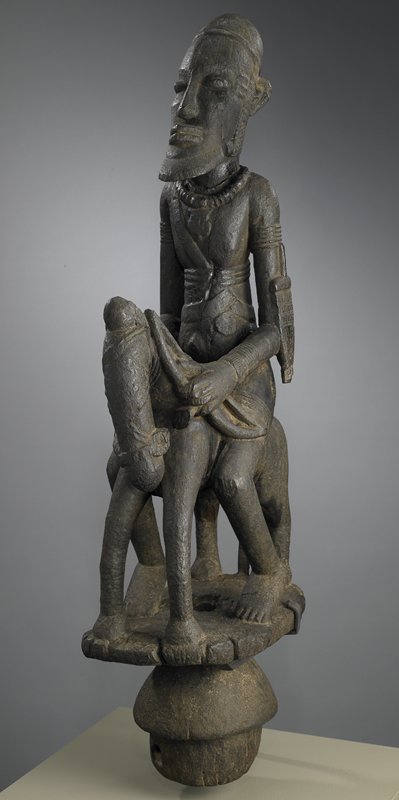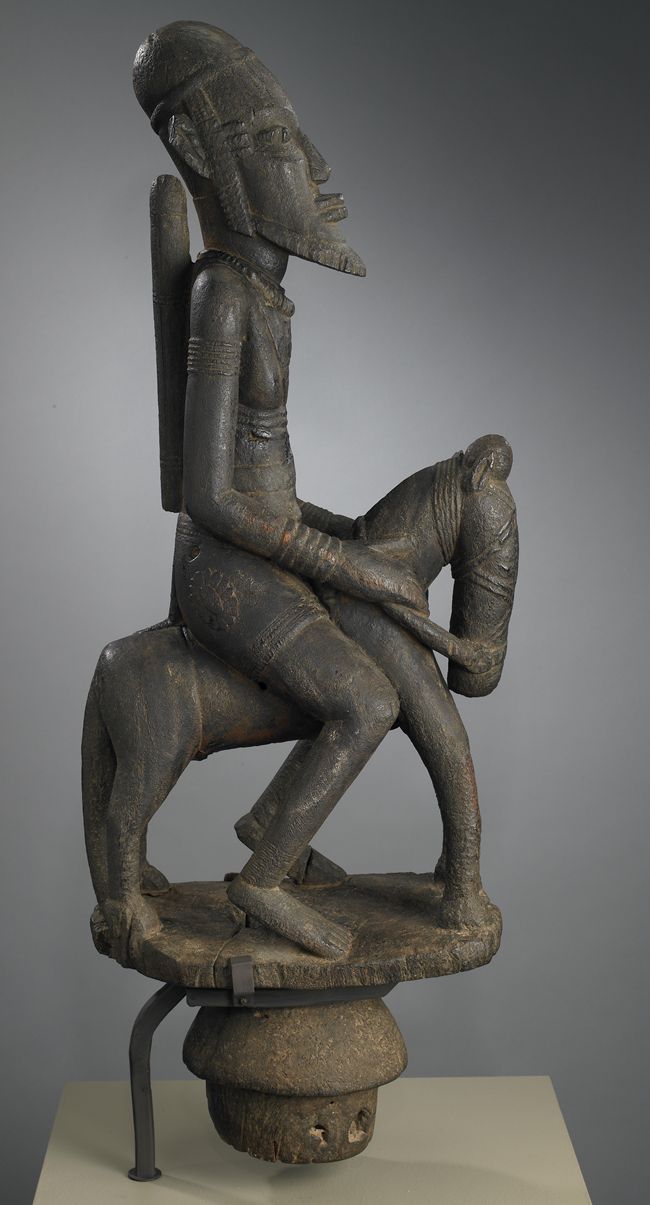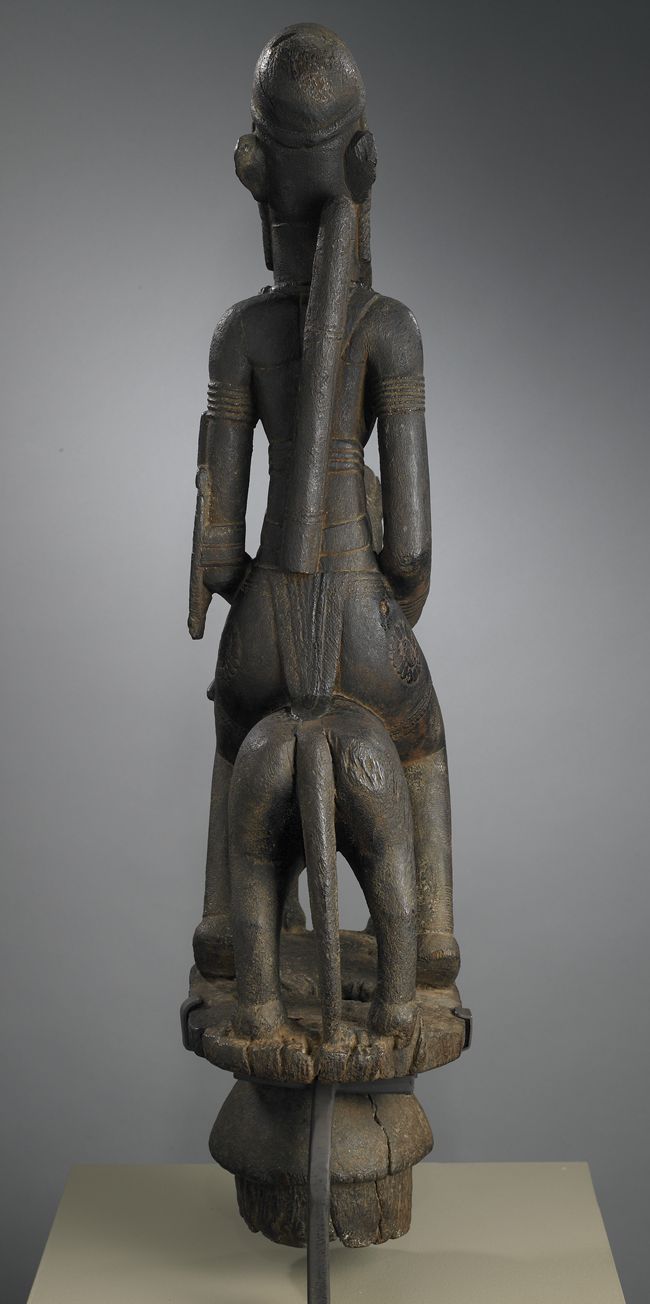
Try Amazon Audible Premium Plus and Get Up to Two Free Audiobooks
Equestrian Figure, Djenne, Mali, Africa, c. 1450







Equestrian Figure
(Djenne, possibly Soninke)
Mali, Africa, c. 1450
Wood
28 1/4 x 6 3/4 x 10 1/4in. (71.8 x 17.1 x 26cm) (overall) 3 x 6 x 7 1/2in. (7.6 x 15.2 x 19.1cm) (base)
Minneapolis Institute of Art 83.168
Early Arabic documents written by travelers to the great kingdoms of West Africa emphasize the importance of the court's cavalry, describing riders dressed just like this one. Some writers also describe the horses as being small.Horses were likely introduced to West Africa through northern travelers from Carthage and Libya. Ancient rock art in Africa shows that some horses existed south of the Sahara Desert before the arrival of horses from the north; nonetheless, their presence in West Africa during the period under discussion can be attributed to Islamicized Berbers traversing the Sahara Desert to establish trade routes and convert native populations to Islam around 800 CE. Their success in establishing a powerful presence in West Africa owed much to their mastery of small, native horses, known as Barb or Berber horses.
The Berber horse, a native of North Africa, is seldom taller than 14 hands (most horses range from 15 to 16 hands, representing the physical length of a typical human hand). The breed, in spite of its small size, is strong. Centuries ago its ability to perform even in harsh environments must have been highly valued. It might have been especially well suited for long-distance travel and, later, battle; it is nimble, responsive to riders' touch of the reins, and willing to obey commands without hesitation.
The small scale of the horse in this sculpture might be a realistic representation of these small, sturdy horses and their importance to the expansion of trade, wealth, and territory during the age of Africa's great West African empires.
Another explanation for the small scale of the horse is artistic emphasis: the artist might have wanted to show the rider as the sculpture's most important aspect. Emphasis is a principle of art used by artists to draw attention to a particular aspect of an artwork.
Horses in this region required a great deal of care and maintenance; as a result, only people associated with the king, his court, and his cavalry owned them. In many parts of Africa a mounted horseman symbolizes great power, a potent fusion of human intelligence with animal strength. Though the identity of this particular rider is unknown, his body language, fancy dress, and stock of weapons indicate his wealth and command as a leader, much like the men described by Arab visitors to the Mali kingdom. The artist has focused the most naturalistic detail on the rider's emblems of rank, his weapons, costume, and jewelry.
The artist skillfully rendered the rider's weapons as well; he sports a dagger on his left arm and holds a bow in his left hand, and a cylindrical quiver, supported by straps fastened between his shoulder blades, hangs on his back. These symbols reinforce his status within the court system. The horse could be another emblem of his prestige. The artist might have emphasized the man by enlarging him relative to the horse as a way to communicate the man's status.
Emphasis is a principle of art that assigns one element of an artwork dominance over another. An artist can emphasize one feature of the artwork, often to focus the viewer's eye and add visual impact. As in this sculpture, emphasis is frequently achieved by means of contrast. Here, in addition to the contrast in size, the artist made the horse relatively plain and its limbs and head tube-like, compared to the rich, expressive details of the man.